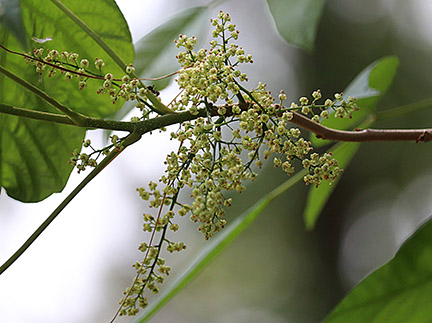Happy Mystery Monday! Can you guess what is pictured in the photo below:

The answer to last week’s mystery is yarrow, Achillea millefolium, pictured in the photo below:

Yarrow is a herbaceous perennial native to North America. It has feather-like leaves and flat-topped clusters of tiny, fragrant white to pink flowers. Yarrow can be found in cultivated gardens, and beside fields, mountains, and roadsides.
Yarrow is pest- and drought-resistant. Full sun exposure encourages compact growth and many flowers. In partial sun or in shade, yarrow tends to grow leggy. It thrives in hot, dry conditions and does not tolerate constantly wet soil.
Native bees are attracted to yarrow in large numbers. Butterflies are also drawn to yarrow. It makes a nice addition to fresh or dried flower arrangements.
Yarrow’s Latin name, Achillea, comes from the Greek hero Achilles, who was said to have used yarrow to treat wounds of his soldiers during the Trojan War.
Mystery Monday is sponsored by the Spy Newspapers and Adkins Arboretum.









